Ticks
Ticks are parasites with a worldwide distribution that feed blood on numerous vertebrates. They play an important role in the transmission of a variety of viruses, bacteria or parasites to humans and animals.
Tick species
Ticks are a group of hematophagous ectoparasites with about 900 living species. They belong to the class Arachnida (arachnids), subclass Acari (mites). The suborder Ixodida (ticks) contain three families: the Ixodidae with 14 genera (hard ticks), the Argasidae with four genera (soft ticks), and the Nuttalliellidae, represented by only one speices. While hard ticks carry a hard shield of chitin that covers only part or all of their backs, depending on the stage of development, soft ticks have a leathery skin without a back shield. In Europe and North Africa, the most well-represented genus is Ixodes (25 species), followed by Hyalomma (11 species), Haemaphysalis and Rhipicephalus (each with 8 species), Ornithodoros (7 species), Argas (6 species), and Dermacentor (2 species). Ixodes ricinus is the most common tick species in Central Europe. In addition to Ixodes ricinus and other Ixodes spp., Dermacentor reticulatus (ornate cow tick, ornate dog tick, meadow tick, marsh tick), Rhipicephalus sanguineus (brown dog tick) and Hyalomma marginatum (Mediterranean Hyalomma) are medically relevant tick species occurring in Switzerland.
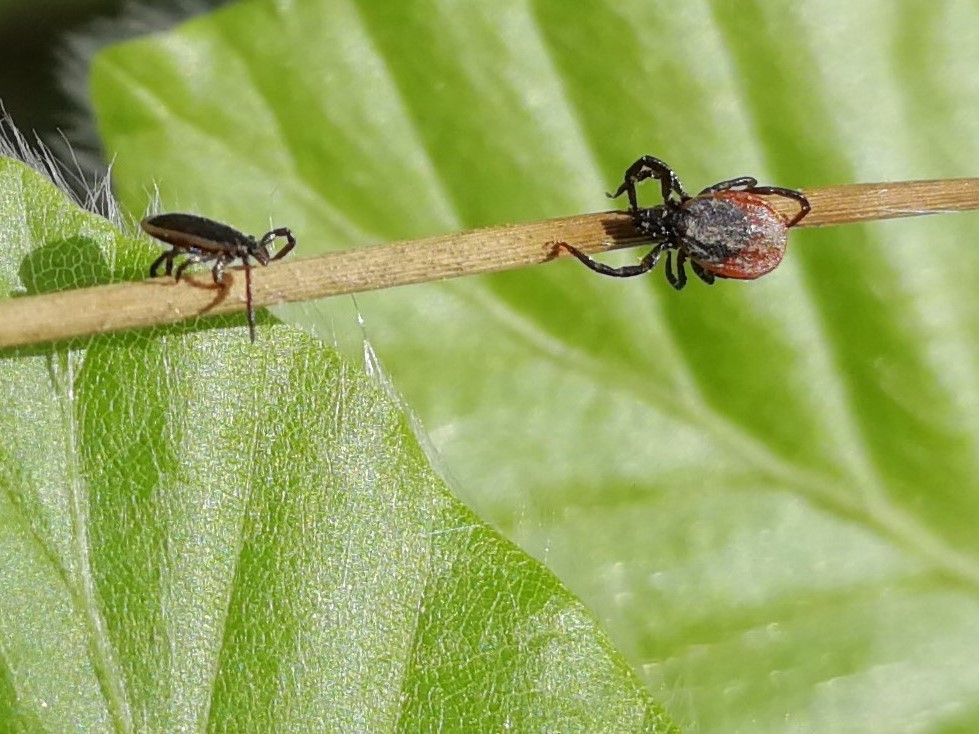
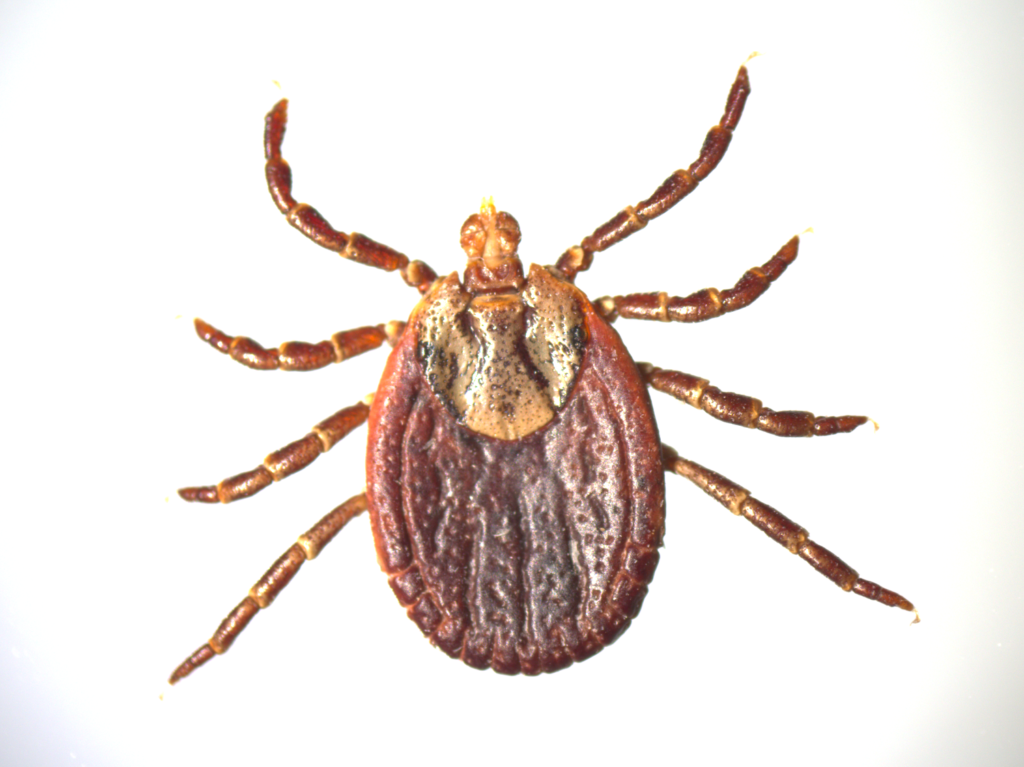
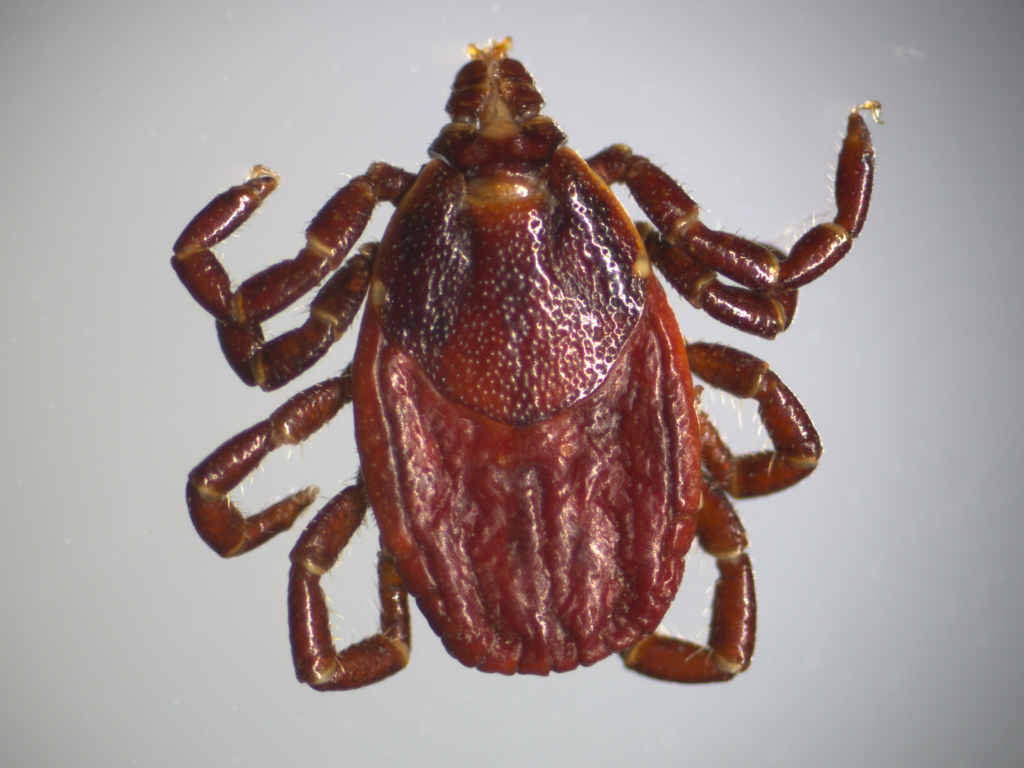

Life cycle of Ixodes ricinus
The life cycle of Ixodes ricinus proceeds through three developmental stages (larvae hatching from eggs, nymphs, and adult males or females), where the major requirement for molting and entering the next stage is the uptake of a blood meal from a vertebrate host. Each stage feeds on a different individual host. The duration of each stage is typically one year, wherefore the completion of the entire developmental cycle generally takes three years. However, it ma y vary from two to six years, depending on climatic conditions and geographic location.
Ixodes ricinus inhabits specific foci within deciduous forests of central and western Europe, where particular macro- and microclimatic conditions coincide with the presence of a proper combination and density of vertebrate hosts.
Generally, Ixodes ricinus can be found in a wide geographical range from Portugal to Russia and from North Africa to Scandinavia.
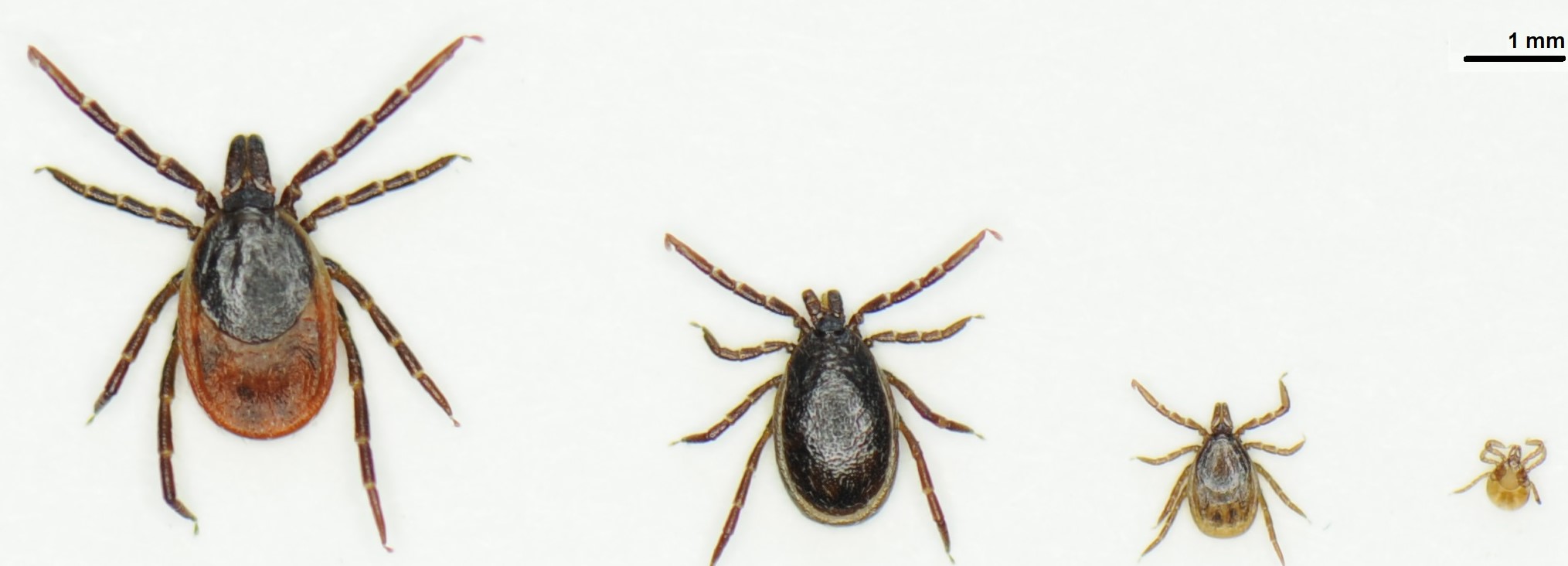
In Switzerland, the conditions for the presence of Ixodes ricinus are met in up to an altitude of approximately 1’500 meters above sea level. The optimal temperature range for tick activity is between 14°C and 23°C, and the relative humidity must be at least 80%. However, ticks become active when the average temperature on the ground exceeds 7°C for 5 days.
Global warming promotes the increase of the tick population by prolonging the tick activity season and favoring the survival of hosts in winter.
Tick activity varies across their range and can exhibit a unimodal or bimodal pattern, with peak densities in spring or fall. In general, Ixodes ricinus shows a bimodal activity pattern with increased activity in spring and fall, but this may vary from year to year in a given location. In Switzerland, the season in which ticks are particularly active begins in March and ends in November, depending on the weather. The tick model shows the static geographic distribution of areas where tick populations can establish and survive in nature.
Host finding and feeding
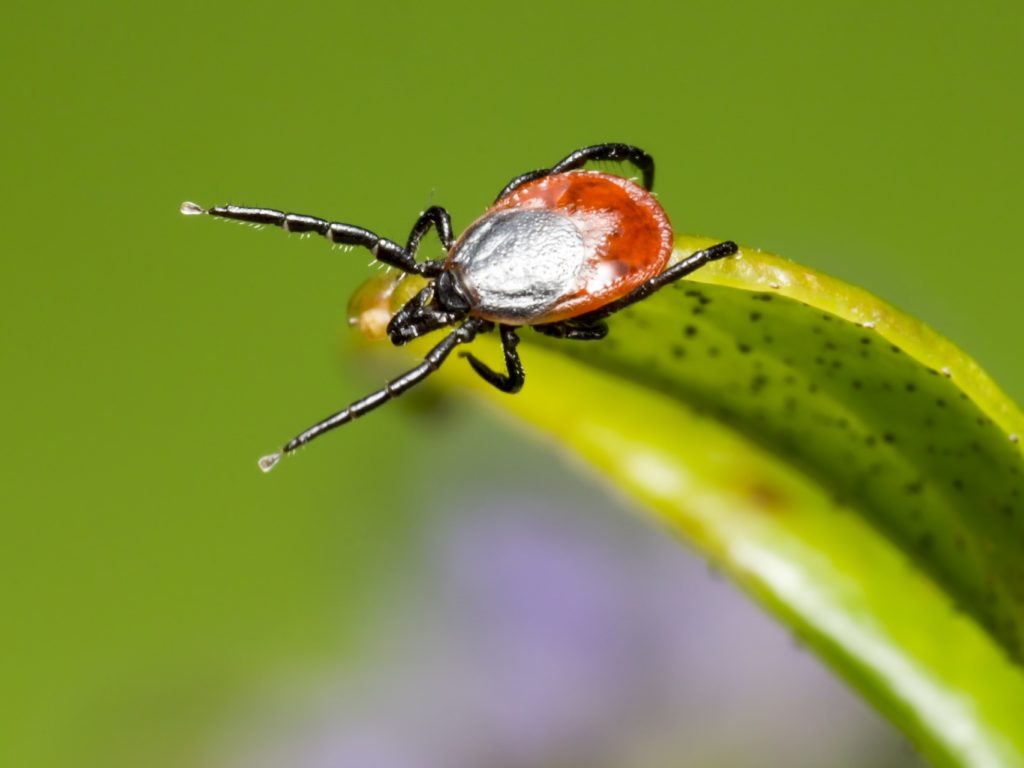
Under favorable climatic conditions, questing Ixodes ricinus ticks are found on brushy vegetation. Adult ticks will climb as high as 1.5 meters, nymphs less than 1 meter, and wait for a host nearby passing. Ticks are able to sense a host with their Haller’s organ, which is located on the upper side of the tarsus, the last leg segment of the first pair of legs (“forelegs”). Haller’s organ possesses chemo-, mechano-, and thermoreceptors. The most important stimuli are carbon dioxide (CO2), vibration produced by moving potential hosts, and host temperature. In addition to Haller’s organ, ticks possess a number of other sensory hairs, which are located on the palps at the sides of the mouthparts and on the two front pairs of legs.
After successfully finding a host, the tick will crawl on the host for several hours in search of a suitable feeding site. The feeding tick begins salivating into the developing hematoma and sucking blood; phases of salivation and blood sucking alternate. Saliva not only plays an important role in the feeding tick’s osmoregulation but has also a variety of pharmacological effects. There is an extensive array of antihemostatic, antiinflammatory, and immunomodulatory proteins and lipids in the tick saliva that suppress the host’s ability to reject the feeding tick. Typical attachment periods range from as few as 2 days for larvae to as long as 13 days for females. The tick can take up blood volumes 100 to 200 times higher than its body weight.
The controlled timing of drop-off from the host offers important ecological advantages. For Ixodes ricinus, such drop-off rhythms are synchronized with host behavioral patterns. This tends to disperse fed ticks in optimal habitats where they can develop and reproduce.
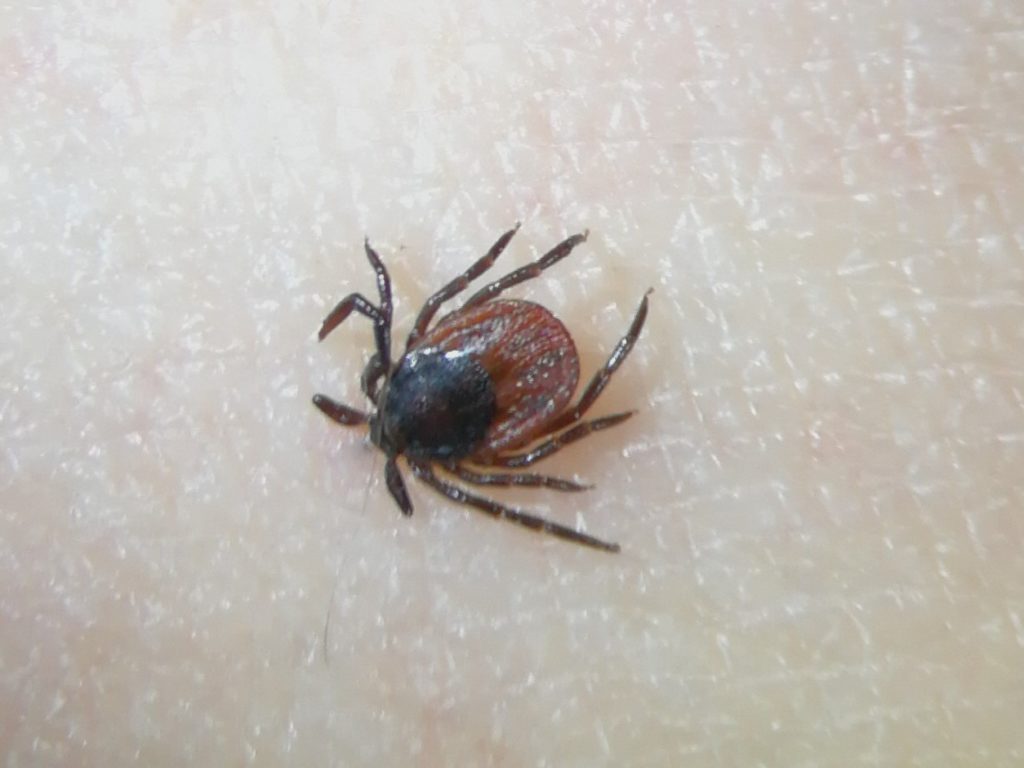
Vector competence
About 10% of the roughly 900 tick species known to date are of human or veterinary importance. Besides direct damage that can result from blood ingestion and, in some cases, from the excretion of toxins in tick saliva, the main importance of ticks lies in the wide variety of pathogens they can transmit, including bacteria, viruses, unicellular parasites (protozoa) and parasitic worms (helminths).
Vector competence, the ability of a tick to transmit a pathogen, depends on several factors. These affect characteristics such as the ticks’ preference for certain hosts, the duration of the blood meal, the interactions between the tick and the pathogen or between the tick microbiome (the totality of microbes colonizing the ticks) and the pathogen, and the tick’s susceptibility to infection with the pathogen. Thus, different pathogens are vectored by different tick species.
"New" tick species
The genus Hyalomma is a tropical tick species, which has also been found in Central Europe for some time (e.g. for the first time in Germany in August 2018) and also occurs in Switzerland. Typical habitats of Hyalomma ticks are dry and hot areas such as deserts and steppes, accordingly it is resident in arid and semi-arid areas of Africa, Asia and Europe. Increasingly mild winters have also allowed the species Hyalomma marginatum to establish itself in central and northern Europe.
In contrast to Ixodes ricinus, it hunts actively and is significantly larger (1 – 2 cm long; Ixodes ricinus females are about 0.5 cm long).
Adult Hyalomma ticks feed on large animals or humans. They can transmit pathogens such as Crimean-Congo hemorrhagic fever virus or Rickettsia spp.
Protection against tick bites
Behavioral measures for protection against tick bites are:
- Avoid staying in high grass and undergrowth
- Wear tight-fitting clothes with long sleeves and trouser legs
- Wear light-colored clothing on which ticks can be detected easier and more quickly
- After each walk and stay outdoors, thoroughly examine the body for ticks
In addition to behavioral measures, repellents can also be used to protect against tick bites. Repellents containing DEET, icaridine or citridiol have been shown to have a certain effect against ticks; however, this usually only lasts for a few hours. In addition, impregnation agents for clothing exist.
Sources
- Agustín Estrada-Peña, Andrei Daniela Mihalca, Trevor N. Petney Editors. Ticks of Europe and North Africa – A Guide to Species Identification. Springer International Publishing AG 2017
- Gray, J.S. The development and seasonal activity of the tick Ixodes ricinus: a vector of Lyme borreliosis. Rev Med Entomol, 1991 79:p. 323-333
- Ehrmann, S., Liira, J., Gärtner, S. et al. Environmental drivers of Ixodes ricinus abundance in forest fragments of rural European landscapes. BMC Ecol 17, 31 (2017).
- De la Fuente J et.al. Tick-Pathgen Interactions and Vector Competence: Identification of Molecular Drivers for Tick-Borne Diseases. Front Cell Infect Microbiol. 2017 Apr 7;7:114.
- Dobler G. et al, The TBE Book, 4th Edition, Global Health Press 2021
- Pages F, Dautel H, Duvallet G, Kahl O, de Gentile L, Boulanger N. Tick repellents for human use: prevention of tick bites and tick-borne diseases. Vector Borne Zoonotic Dis. 2014 Feb;14(2):85-93.
- Epidemiologisches Bulletin Robert Koch Institut, Februar 2019/Nr. 7
- European Centre for Disease Prevention and Control; Ixodes ricinus – Factsheet for experts
- Federal Office for Public Health Switzerland
- https://www.zecken.de
- https://zecken-stich.ch
